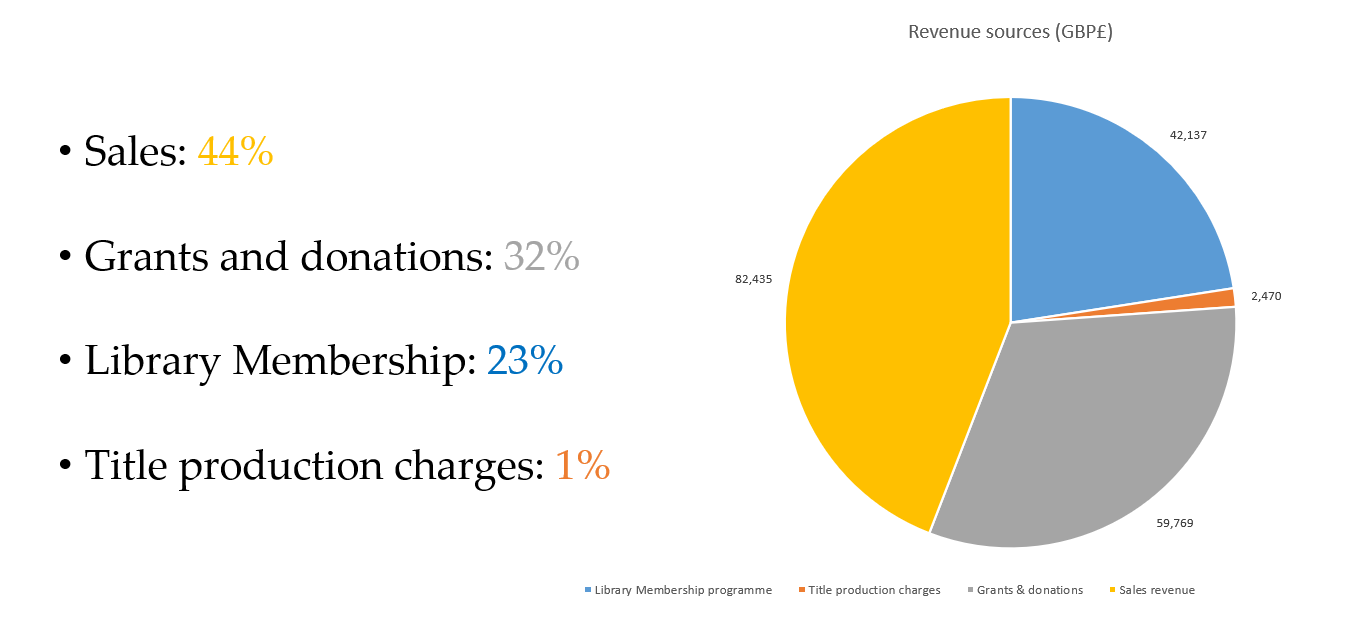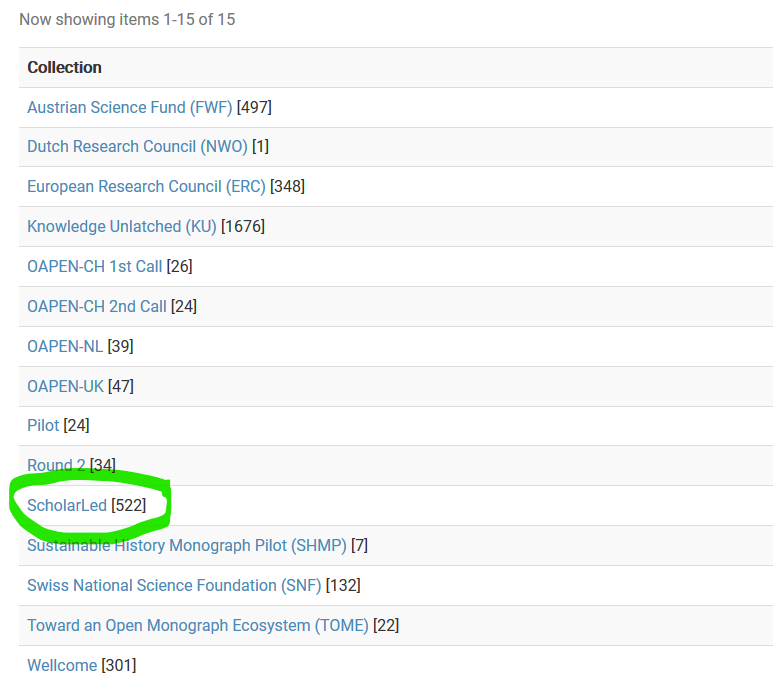The cost of Open Access books: a publisher writes
The cost of Open Access (OA) book publishing has been the topic of some discussion in the UK due to UKRI’s consultation on its Open Access policy, which proposes that all UKRI-funded research published in book or chapter form should be Open Access from 2024.
One of the biggest objections to the plan is that it will be too expensive to fund the OA publication of academic books—some of the more breathless coverage has speculated that this policy might herald the end of the monograph as a viable format for scholarly work.
At Open Book Publishers (OBP) we have published all our books Open Access since our founding in 2008—so we disagree. Our books are rigorously peer-reviewed, award-winning, innovative, and available in multiple Open Access editions (PDF, HTML and XML) as well as physical and ebook editions. We do not charge authors ‘Book Processing Charges’ (BPCs) to publish with us—quality is the only factor that determines whether or not we publish a book.
It can be done.
But many of the conversations about the financial viability of Open Access book publishing are predicated on a single business model—that of the BPC—and they assume there will be no revenue when a book is published OA.
The debate is usually held on these terms because up-to-date, detailed information about how much it costs to publish an OA book, and the revenue streams that are available to meet these costs, is sorely lacking. Such information is rarely made public, in part because commercial presses are reluctant to do so on the basis that it will put them at a competitive disadvantage. Recent estimates have therefore tended to be drawn from the charges some well-known publishers levy to produce an OA book—but price is not the same as cost.
As Elizabeth Gadd has recently pointed out, the purpose of research dissemination is not to prop up broken publishing systems. Open Access is much more effective at communicating knowledge than a non-OA system, as the current pandemic is starkly demonstrating (and as was obvious before to those without access to a well-stocked academic library, with the funds to pay for expensive monographs and to cover hefty journal subscription costs).
Therefore, if a BPC model cannot support Open Access for books in a fair and sustainable way, it isn’t Open Access that should be thrown out—it’s the BPC model.
Since we are an established OA press that does not charge BPCs, we decided it would be useful to lay out our own costs and revenue for the last financial year (1 October 2018 - 30 September 2019), to provide some of the numbers that are currently missing and to counter some of the prevailing assumptions about funding OA books. We explain our business model in some detail to demonstrate that there are alternatives to the BPC approach, and that they can produce high-quality, Open Access academic books.
The post is set out as follows:
About OBP
OBP has published award-winning Open Access books (including monographs, edited collections and textbooks) since 2008. In that time, our output has grown to over 170 titles, at a current rate of between 24-30 books per year. Our books mostly cover subjects in the Humanities and Social Sciences.
We are an independent, not-for-profit social enterprise, run by and for academics, based in Cambridge, UK. The press’s founders and Directors are researchers in the Humanities and Social Sciences, as are several of our team. We are committed to making academic books freely available for everyone.

All our books are available in high-quality Open Access editions (PDF, HTML and XML), and reasonably priced paperback, hardback and ebook editions (EPUB and MOBI), all created from the same master file and published on the same date with no embargo period.
We do not charge authors to publish with us. We believe that charging authors is an unsustainable and inequitable way to fund Open Access.
Our titles are accessed by millions of people around the world. A monograph typically sells 200 copies over its entire lifetime, but our books are viewed an average of 400 times per title every month. In total, we have received over 3 million book visits, and this is only from those sources we can measure: actual usage of our books will be far in excess of these figures.
Quality
All our books are rigorously peer reviewed: first an author’s proposal is assessed internally by our Board of Directors and members of the Editorial Board and Advisory Panel, and then, if judged of sufficient quality, the full manuscript is sent for review by at least two experts in the relevant field. Based on these reports, our Board of Directors makes a final decision.
Our titles have been submitted for scrutiny as part of the UK REF assessment exercise and they are reviewed by academic publications including The Times Literary Supplement, Times Higher Education, Choice Review, Essays in Criticism, Modern Language Review, and many more. They have received prizes in recognition of their excellence, and we are particularly proud that our authors often commend the quality of our editorial and marketing work, comparing it favourably with that of larger presses.

Our publications often include multiple full-colour images, embedded sound and video, and other innovative features to enhance the reader’s understanding of a subject. With the use of URLs and QR codes in paperback and hardback editions, our titles make good use of the digital medium without abandoning the printed book.
Each book is marketed to researchers, journals and libraries, and thanks to our Library Membership programme our titles are listed in the catalogues of academic libraries all over the world. We work in partnership with organisations such as Worldreader, who make our books accessible for people who only have basic mobile phones, and the RNIB (Royal National Institute for the Blind) who create editions for those with visual impairments. Our printed editions are available via print-on-demand and all our books are preserved in the UK legal deposit libraries at the British Library, OpenEdition, Google Books and the Internet Archive.
All this is to say: we don’t get away without charging BPCs because our work is sub-standard. It is of high quality.
Costs
Studies of Open Access business models often focus heavily on revenue (as have some discussions of the UKRI OA policy, with their emphasis on the author-fee model when discussing the funding of Open Access books). But this is the wrong place to start: more revenue is required if costs are bloated. Conversely, if costs can be managed, revenue does not need to be as high.
As detailed above, our cost efficiency is neither at the expense of the work we publish nor the experience of publishing with us. High costs are not in themselves an indicator of quality.
We are a non-profit publisher, so we do not need to make additional revenue for shareholders. Our operations are entirely structured around our key objective: making high-quality research as widely accessible as possible. Financial sustainability is obviously important, but any profits are reinvested so we can publish more titles. Our full financial statements are publicly available online at Companies House.
During the last financial year (ending 30 September 2019) we had two operational centres within OBP: a publishing centre (the core of our work, publishing OA books) and a software development centre (developing open source software to support OA book workflows and infrastructure). The latter was funded entirely from research and development grants received for that purpose, and had no direct impact on the funding model of the publishing centre. So here we separate out the costs and revenue of our publishing operation.

During this period, we published 25 new titles.
For comparison with other studies, it might be informative to consider the average ‘first copy’ cost of production for our titles. This can be obtained by considering ‘Total costs’ less ‘Printing costs & royalties’ (which are associated entirely with costs incurred after the first copy) and dividing by total number of titles published
Average ‘first copy’ cost of production = £5266 per title
For complete transparency, we should note that our offices in King’s College, Cambridge are kindly provided to us on favourable terms. If we were to be renting office space in Cambridge at commercial rates our rent would be approximately £12,500 pa higher than we are presently paying—so for comparison with some other studies it may be reasonable to add an additional £500 per title to the first-copy production costs to reflect that. Even then our first-copy production costs come in at under £5,800 per title.
By comparison, the Ithaka report into publishing costs at university presses in the US (2016) estimated average first-copy costs of production at around $30,000-$50,000. So why the huge difference in these production estimates?
We provide a more detailed breakdown of our estimated costs of production on our website (Author's Guide, p. 51):

In informal discussions with some traditional university presses it appears that our costs of copyediting/proofreading and typesetting are comparable to, if not a little higher than, many other presses—but that the largest difference is in expenditure on acquisitions. Other presses invest a lot of resources in “acquiring content, an area closely tied to the character and reputation of the press [...] selecting and developing the most promising authors and topics to the press.” However, we would suggest it is unfair to pass this cost onto the author (or funder) in the form of a BPC—a cost that is incurred essentially to burnish the reputation of the press and to make it stand out compared to its competitors, rather than directly to support the publication of an author’s work.
Another aspect of costs worth highlighting is distribution. The costs detailed above, and included in most studies of publisher costs, exclude the cost of distribution, as these are typically taken out of sales revenue prior to receipt of that revenue by the publisher. Most distributors, of both printed editions and ebooks, take a margin of 30-60% of the sale price of the title. Given that our printed titles typically retail at less than £15-£30, and ‘legacy’ publications typically retail at prices in excess of £60-£120, it seems likely that distribution costs associated with our printed titles are, at most, half of those for legacy publishers. Of course the comparison of distribution costs for digital editions are considerably more striking—with the vast majority of people accessing our digital titles at no cost (the hosting costs we incur for this are incorporated into our ‘Overheads’ cost).
Revenue
There are four strands to our revenue:

The largest is sales—an aspect often completely ignored in discussions about how to fund Open Access books. As previously mentioned, our books are freely available in OA editions from the date of publication as well as in reasonably priced paperback, hardback and ebook editions. Generating significant income from sales of Open Access books is by no means unusual, as studies have shown—and as other presses have noted.
Grants and donations: we do not impose charges to publish with us, but we do encourage authors if they can to apply for grants to defray production costs—this enables us to take on more books that do not have any grant income attached. The availability or otherwise of grant money has no impact on our publication decisions, which are entirely dependent on the outcome of the peer-review process detailed above. We have also included donations given directly to OBP to facilitate our work (i.e. not associated with any particular title).
Library Membership programme: our Library Members pay an annual fee of £300 to support our work, in return for a range of reader-targeted benefits for members of the university. This innovative programme has been in place since 2015 and it has proven popular—we currently have over 170 member libraries from all over the world, and other presses are beginning to create similar programmes. Many libraries see their membership as an investment in the future of Open Access and as part of the transition away from expensive, closed-access models of research dissemination. We are proud to have their support in making research freely available for everyone.
Title production charges: While we do not impose publishing costs on authors, we are sometimes asked by authors to provide additional services such as image-processing and indexing, for which we charge separately.
In a mixed funding model like ours, you could, of course, change the balance—we could attract more libraries to our Library Membership programme to raise more revenue that way, and consequently reduce the amount we would need from other sources. Likewise, the more books we are able to publish, the more we can expect to earn in sales. The point is that any individual book is cross-subsidised by different revenue sources: we do not require our authors to pay the costs themselves up-front in the form of a BPC.
But how does it scale?
This is a common rejoinder to discussions about our business model. An obvious answer might be by scaling the component parts: we could increase our revenue via our Library Membership programme and hire more staff to publish more books, thus boosting our sales income. But we want to facilitate a more powerful expansion of OA book publishing—by facilitating the growth of more presses like ourselves, which publish OA books without charging authors.
Despite the habitual focus on a small group of large legacy presses, there is huge diversity in the Arts and Humanities publishing landscape. Simon Tanner has noted that, for REF2014, 1,180 publishers were associated with the books submitted to Panel D (Arts and Humanities). Many of these were small and/or specialist presses, with the top ten publishers accounting for less than 50% of submissions.
We believe the scholarly ecosystem is best served by this diversity among publishers, producing a rich variety of books. The best way to ‘scale’ what we do is therefore not to grow bigger ourselves, but to facilitate OA publishing among multiple presses by developing the systems and infrastructures that will enable other publishers to produce Open Access books without needing to charge authors BPCs.
The potential of this idea is illustrated by groups such as the Radical Open Access Collective and ScholarLed (the latter of which we co-founded), who are developing practical ways for OA presses to mutually support each other. The five not-for-profit, academic-led Open Access presses of ScholarLed have between us published over 500 books, and expect to publish over 80 new titles in the coming year. What would the publishing landscape look like if, rather than 5 presses, we were 25, 50, or 100 in number?

We are therefore a key partner in the £3.5 million COPIM (Community-led Open Publication Infrastructures for Monographs) project, an international partnership between researchers, universities, librarians, OA publishers and infrastructure providers, which is building community-governed, open systems and infrastructures to develop and strengthen OA book publishing. (COPIM is substantially funded by Research England and is mentioned in para. 112 of the UKRI consultation as a ‘supporting action’ for the OA monographs policy.) It is building systems to facilitate better funding, dissemination and archiving for OA books, as well as exploring alternative business models to enable non-OA presses to flip to Open Access. Everything it creates will be community-owned and open, so that it serves the dissemination of research in a sustainable and equitable way.

In conclusion
We believe that public discussions about the future of Open Access books, which have intensified thanks to UKRI’s policy review, urgently need to broaden their scope. Rather than taking costs of around £10,000 as a given and focusing on author charges as the only possible revenue stream, there needs to be much more awareness of the diversity of presses operating in Arts and Humanities book publishing today—particularly those presses that are already Open Access—and the range of business models and strategies they adopt.
How might we imagine the future of scholarly book publishing if we consider its whole landscape, rather than focusing on the practices of a few big publishers whose approach to Open Access is so inadequate it is inspiring fears of the death of the monograph? What can be learned if we widen our perspective, and how might that guide our progress?
We hope this post will contribute to fostering that broader and more informed debate about the future of Open Access book publishing.



